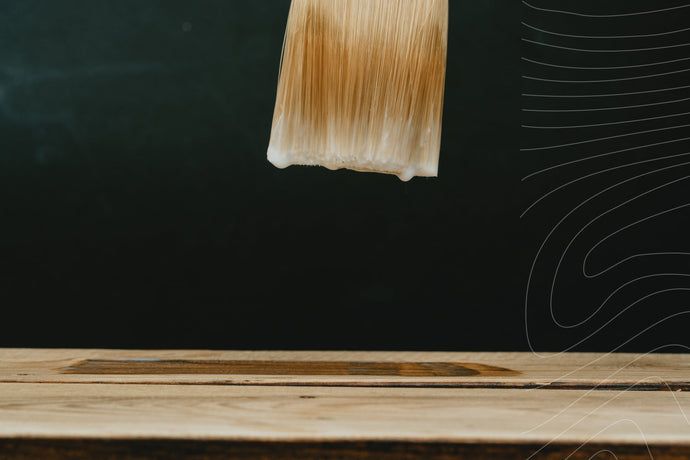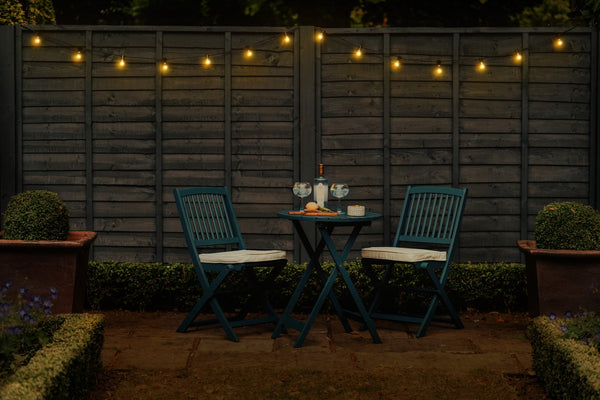
Wooden garden furniture adds a touch of natural beauty and warmth to any outdoor space. However, constant exposure to the elements can take its toll on even the most durable wood. Rain, sun, wind, and temperature fluctuations can all cause damage over time.
But don't worry! With proper care and protection, your wooden garden furniture can withstand the weather and remain beautiful for years to come.
Choosing the Right Wood
When selecting wooden garden furniture for your garden, it's crucial to choose wood that can handle the UK’s damp climate.
- Teak is an excellent choice, albeit a pricier one. Its natural oils make it incredibly resistant to rot, making it perfect for our often-wet weather. Many gardens boast of teak furniture that has lasted for decades.
- Oak is another fantastic option. It's sturdy, durable, and ages beautifully, developing a silvery patina over time that many gardeners adore.
- Cedar is popular for its natural resistance to decay and its pleasant aroma. It's a softer wood, so it may require more frequent treatment, but it holds up well in the UK’s climate.
Avoid wood types like pine unless they've been pressure-treated. Untreated pine doesn't fare well in damp conditions and can quickly succumb to rot.
Applying Protective Coatings
One of the most effective ways to protect wooden garden furniture is by applying a protective coating. This creates a barrier against moisture and UV rays - two of the biggest threats to wood longevity.
Start by sanding the surface of your furniture lightly. This helps to remove any rough spots and allows the protective coating to adhere better. Next, apply any of our top coat products/stains. Look for products specifically designed for outdoor use, as these will offer the best protection against the elements.
For optimal protection, apply coating according to product descriptions. This ensures even coverage and allows it to dry properly.
Use Furniture Covers
Furniture covers are an excellent way to provide additional protection for your wooden garden furniture, especially during harsh weather conditions.
When choosing covers, opt for breathable, water-resistant materials. These will protect your furniture from rain and snow while allowing air circulation to prevent mould and mildew growth.
Ensure that the covers fit snugly over your furniture. Loose covers can be blown off by strong winds - leaving your furniture exposed.
While covers offer great protection, it's important to remove them periodically on dry days. This allows the wood to "breathe" and prevents moisture from becoming trapped under the cover.
Provide Shelter
If possible, consider providing some form of shelter for your wooden garden furniture. This can significantly reduce its exposure to harsh weather conditions.
A pergola or gazebo can offer permanent protection while adding architectural interest to your garden. These structures can be designed to complement your garden's style and provide a beautiful focal point.
For a less permanent solution, large patio umbrellas can offer protection from both sun and light rain. These can be moved as needed and stored away when not in use.
During severe weather events, it's best to move your wooden furniture to a fully enclosed area if possible, such as a garage or garden shed.
Regular Maintenance
Regular maintenance is key to preserving the beauty and integrity of your wooden garden furniture. Clean your furniture regularly with a mild soap and water solution. Avoid using harsh chemicals or pressure washers, as these can damage the wood.
Pay special attention to removing bird droppings, tree sap, and other stains promptly. These can cause discolouration or even etching if left on the wood for too long.
After cleaning, or after a rainy day, make sure to dry your furniture thoroughly. Standing water can lead to water stains or even rot over time.
Inspect your furniture regularly for any signs of damage, such as cracks or loose joints. Addressing these issues promptly can prevent more serious damage down the line.
Winter Care for Wooden Furniture
British winters can be particularly harsh on wooden garden furniture. Ideally, store your furniture indoors during the coldest, wettest months. A garage, garden shed, or even a dry basement can provide excellent protection.
Before storing, clean your furniture thoroughly and ensure it's completely dry to prevent mould growth during storage.
If indoor storage isn't an option (and for many UK homes with limited space, it isn't), invest in high-quality winter covers designed for our climate. Look for waterproof, breathable options that can withstand our winter winds.
When using covers, try to elevate your furniture slightly off the ground. This prevents it from sitting in puddles or snow, which is particularly important given our wet winters.
Final Thoughts
By following these tips tailored to the UK's climate, you can protect your wooden garden furniture from our uniquely challenging weather.
With proper care, your furniture can become a lasting part of your garden - providing a cosy spot for afternoon tea or a comfortable place to enjoy those precious sunny days when they arrive.

Tackling Mould & Algae: Restoring & Preserving Outdoor Wood
Restore and protect outdoor wood this spring! Learn how to tackle mould & algae and preserve wood with Timbashield’s expert tips.
view this post
Seasonal Wood Care: Protecting Your Exterior Wood Throughout the Year
Discover year-round tips to protect and maintain your outdoor wood. From winter frost to summer sun, keep your wood durable, beautiful, and weather-ready!
view this post
How Do I Protect My Wooden Garden Furniture From the Weather?
With proper care, your furniture can become a lasting part of your garden - providing a cosy spot for afternoon tea or a comfortable place to enjoy those precious sunny days when they arrive.
view this post
